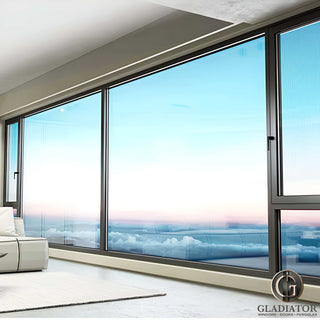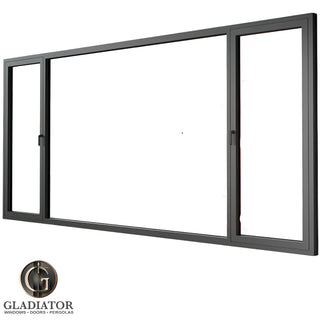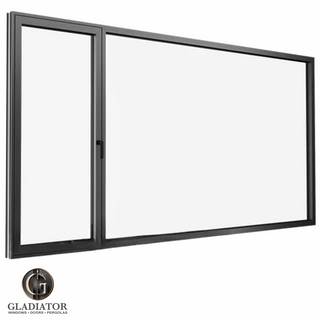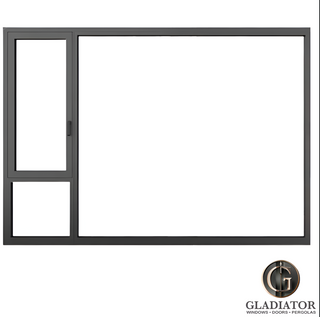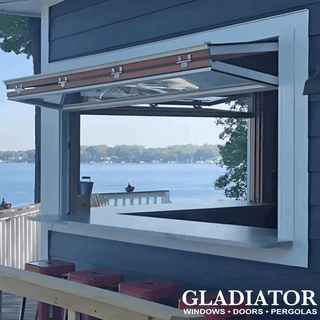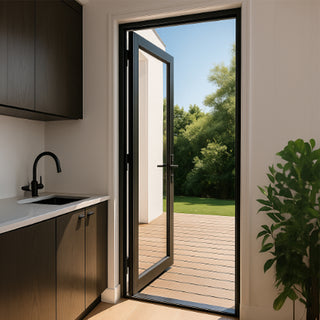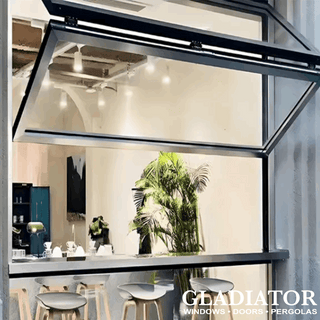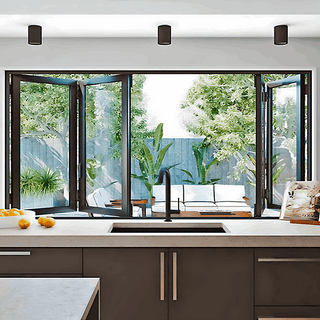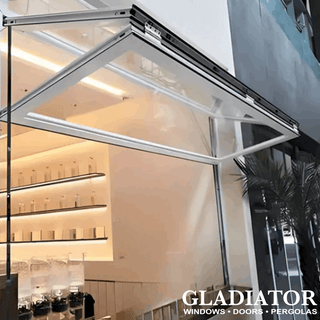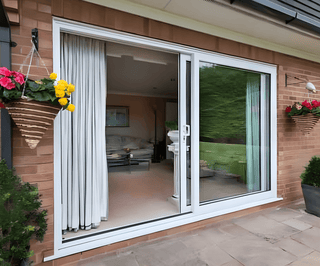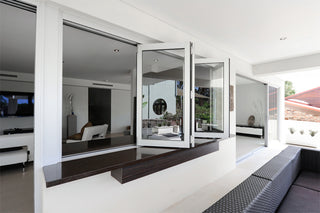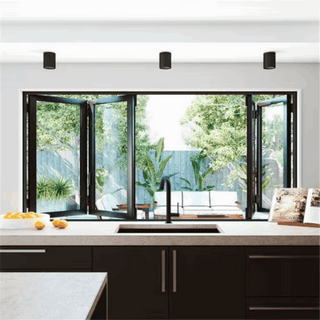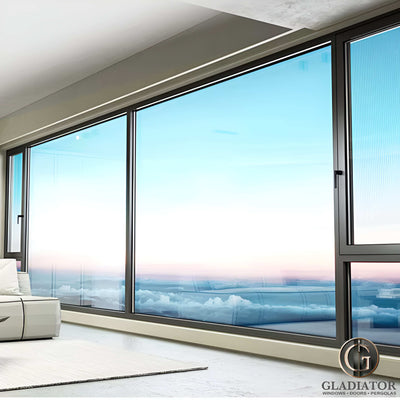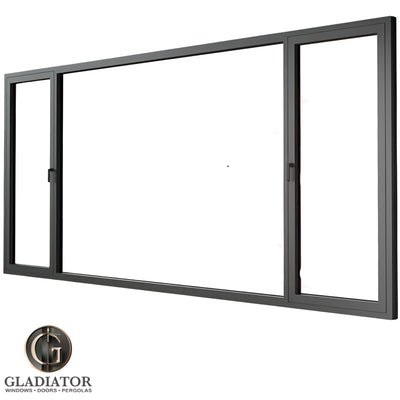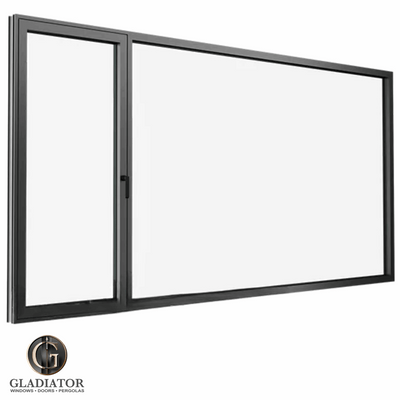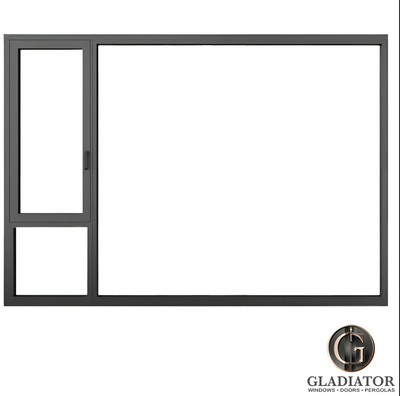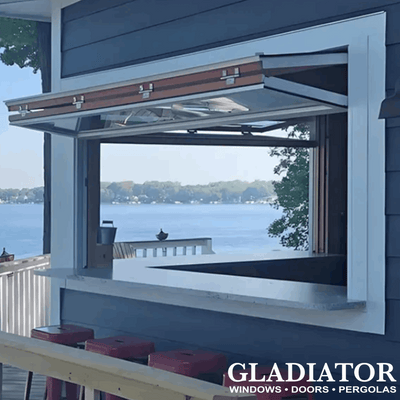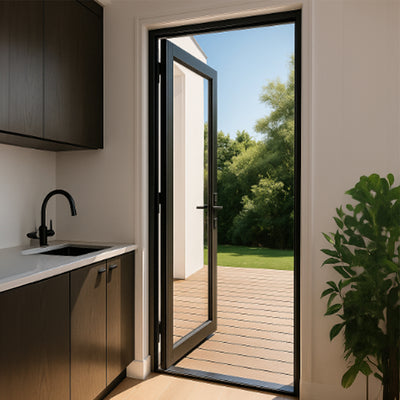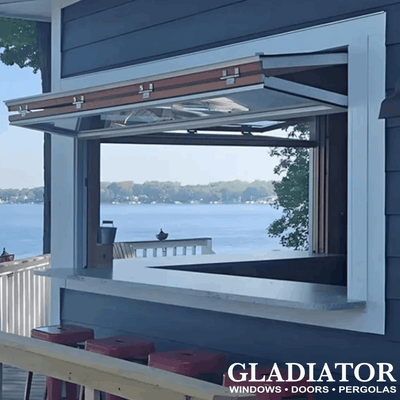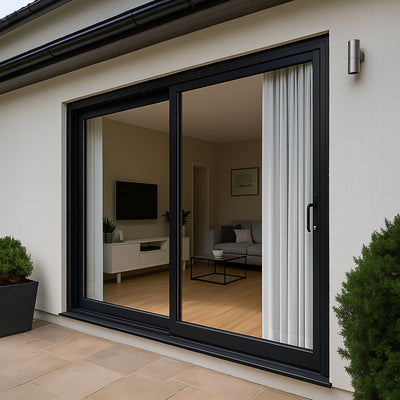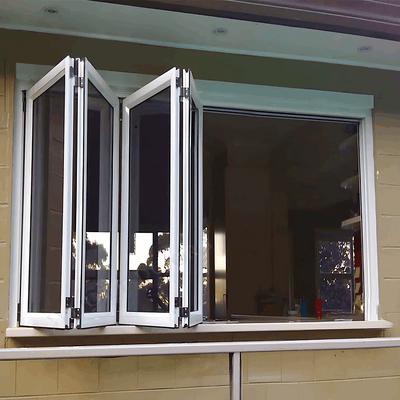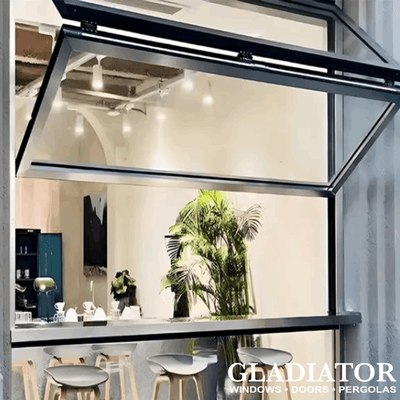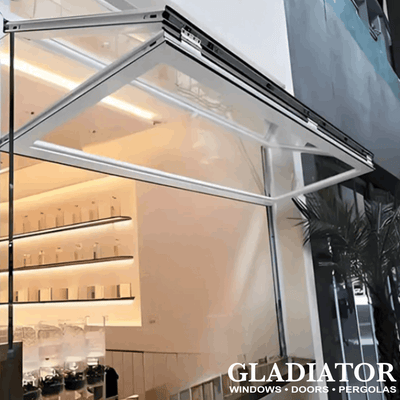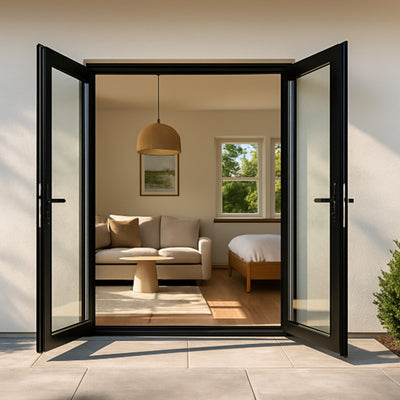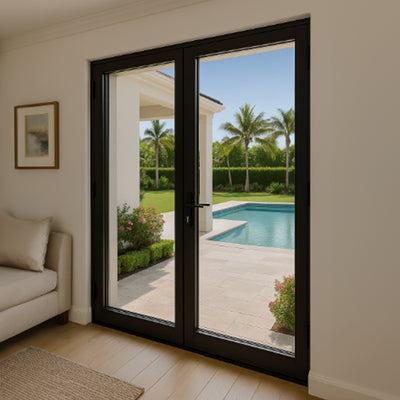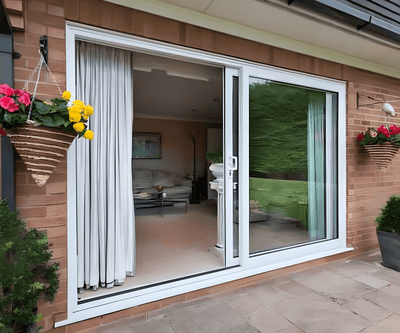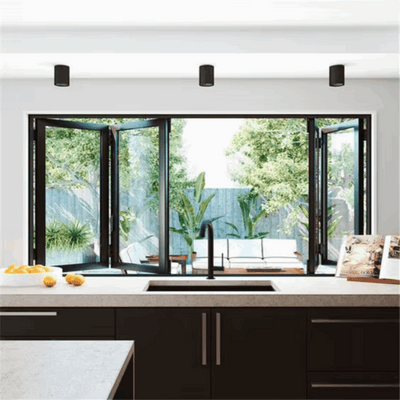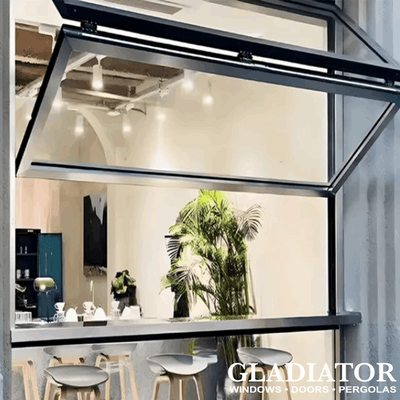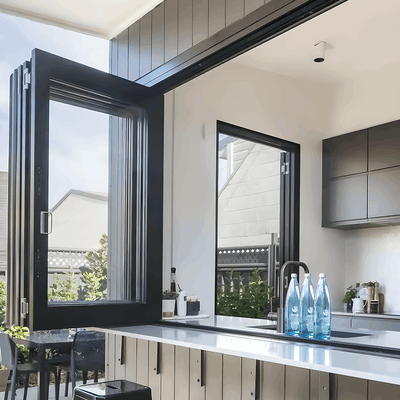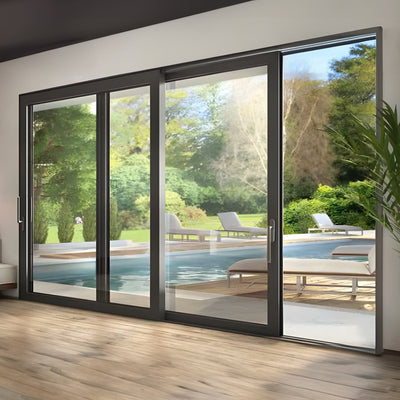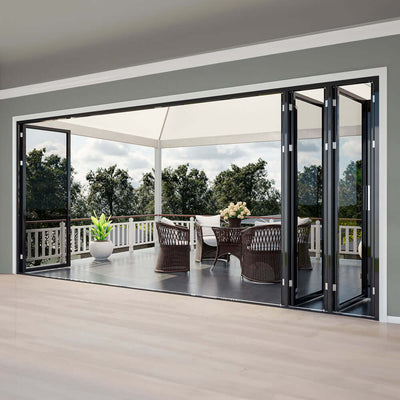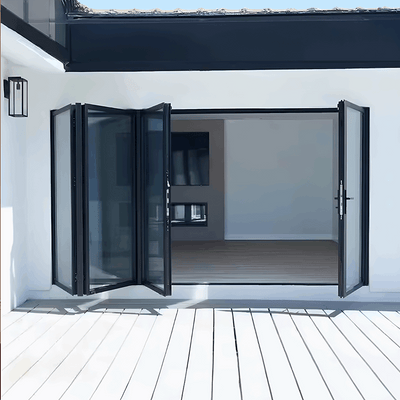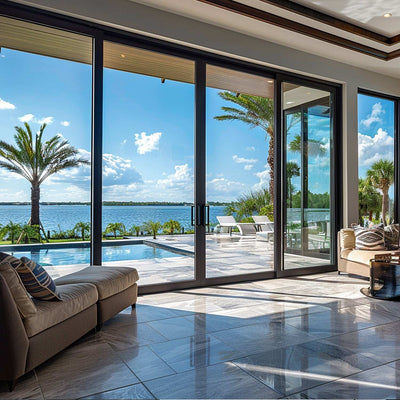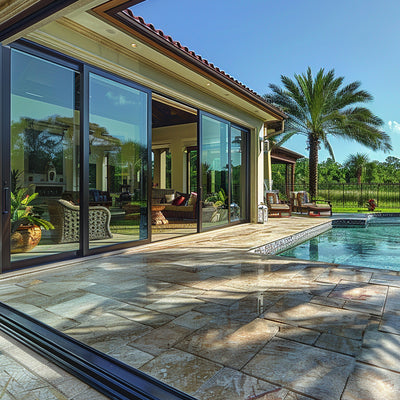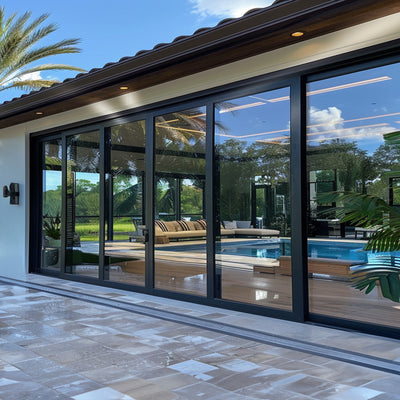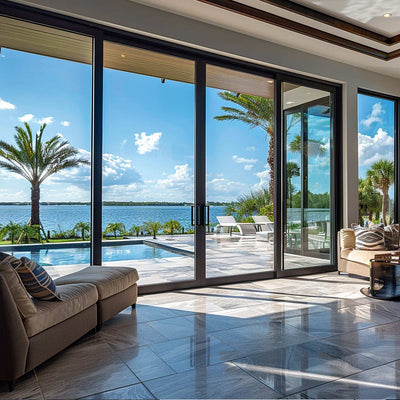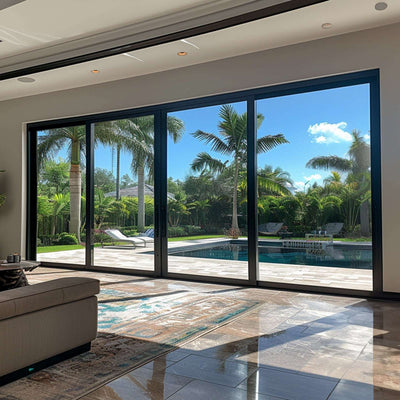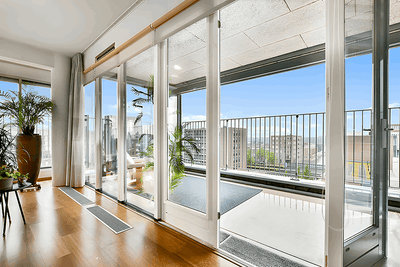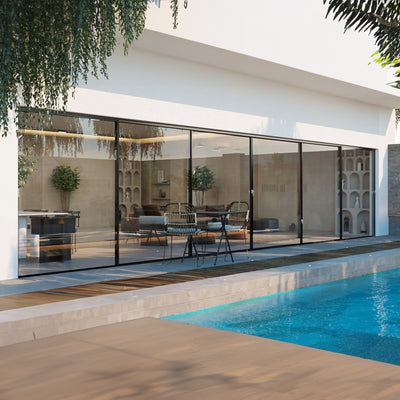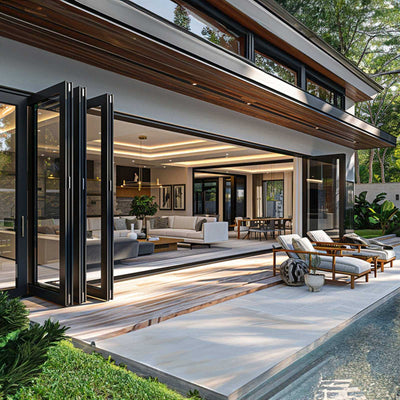The Real Cost of Energy Efficient Windows
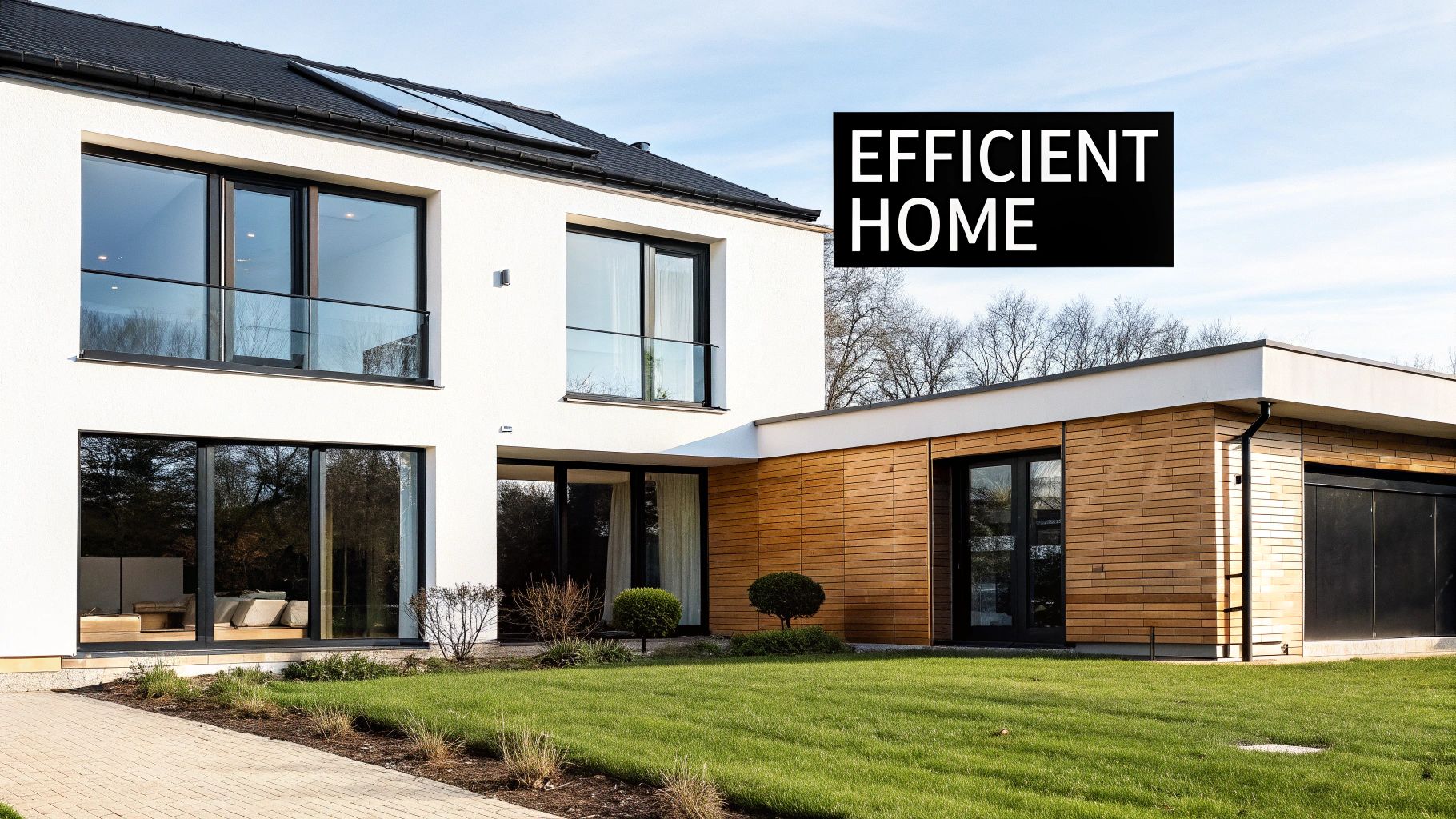
When considering energy-efficient windows, it's important to look beyond the initial price. While the upfront cost of a full window replacement can feel substantial, smart homeowners understand the importance of long-term value and potential savings. This means evaluating everything from materials and installation to potential rebates and the impact on future energy bills. Let's explore the key factors that contribute to the final cost.
Factors Influencing Cost
One of the biggest factors is the type of window. Popular double-hung windows are generally more affordable, while bay or bow windows tend to be more expensive. The size of the window also matters. Larger windows require more materials and labor, leading to a higher price tag. Replacing one large picture window will likely cost more than replacing several smaller ones.
Frame material significantly affects both cost and efficiency. Vinyl frames are typically the most budget-friendly. Fiberglass and wood offer better durability and insulation, but come at a premium. A standard vinyl window might cost considerably less than a comparable fiberglass or wood option.
The glass itself is also a factor. Features like Low-E coatings and argon gas fills improve energy efficiency but increase the initial cost. While adding to the upfront investment, these features offer long-term savings by minimizing energy loss. Energy-efficient windows are a popular choice due to their potential for reducing energy consumption and costs. The average cost can vary significantly, often ranging between $325 and $2,000 per window, with most homeowners paying around $400 for installation. Learn more about energy-efficient window costs from Angi.
Installation Considerations
Installation costs are another key component of your budget. While DIY might be tempting, professional installation ensures maximum energy efficiency and maintains warranty validity. Factors that influence installation costs include the complexity of the project, the accessibility of the windows, and the condition of the existing frames. Older homes with deteriorated frames might require more work, potentially increasing the overall expense.
Whole-House vs. Single Window Replacement
Whether you’re replacing all your windows or just a few also impacts the cost. Whole-house replacements often benefit from economies of scale, resulting in a lower per-window cost than individual window projects. However, the total project cost will naturally be higher. Contractors can often streamline the process and offer discounts on larger projects. Understanding these various factors allows you to make informed choices about your energy-efficient window investment.
Window Types That Deliver the Best Value
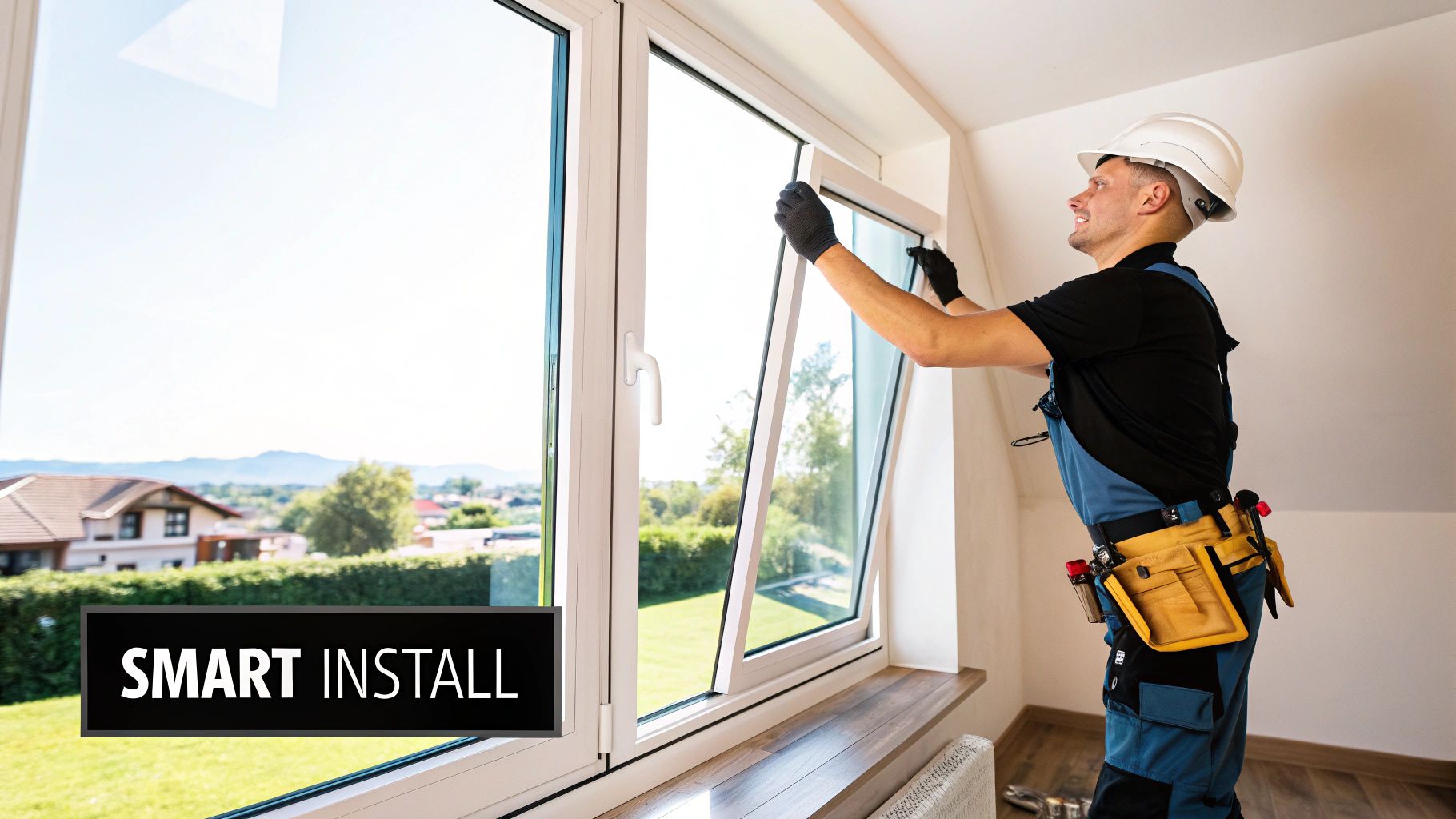
Not all energy-efficient windows offer the same return on investment. Balancing the initial cost with long-term energy savings is key. Understanding the different types of windows and their performance can help you make an informed decision. This involves considering factors like frame material and window style.
Exploring Window Styles and Performance
Some window styles are inherently more energy-efficient. Casement windows, for instance, seal tightly when closed, reducing drafts. Awning windows offer similar benefits, especially in rainy climates. While double-hung windows remain popular, their design can sometimes allow for more air leakage. Consider your needs and climate when selecting a style. For further exploration of window and door options, check out the Gladiator Window and Doors Product Sitemap.
Frame Materials: Balancing Cost and Efficiency
Frame material significantly impacts both cost and performance. Vinyl frames provide excellent insulation and are often the most affordable. Fiberglass frames offer superior durability and energy efficiency but come with a higher price tag. Wood frames have classic appeal and insulate well, but require regular maintenance. Composite frames combine the best qualities of different materials, balancing performance, durability, and cost.
The table below outlines a cost comparison for different energy-efficient window types, including average cost ranges, energy efficiency ratings, ideal climate zones, and expected lifespans. This information can be a valuable starting point for your window selection process.
| Window Type | Average Cost Range | Energy Efficiency Rating | Best For Climate Zone | Lifespan |
|---|---|---|---|---|
| Vinyl Casement | $200 - $800 | High | Most | 20-40 years |
| Fiberglass Casement | $350 - $1,200 | Highest | Most | 30-50 years |
| Wood Casement | $400 - $1,500 | Medium-High | Temperate | 20-30 years |
| Vinyl Double-Hung | $150 - $700 | Medium | Most | 15-30 years |
| Fiberglass Double-Hung | $300 - $1,000 | High | Most | 25-40 years |
| Wood Double-Hung | $350 - $1,400 | Medium | Temperate | 15-25 years |
As the table demonstrates, fiberglass windows offer the highest energy efficiency ratings but also come at a premium cost. Vinyl windows offer a balance of cost-effectiveness and good energy performance. Wood windows, while aesthetically pleasing, require more maintenance and have shorter lifespans.
Finding the Sweet Spot for Your Climate
Your climate plays a vital role in window selection. In colder areas, features like Low-E coatings and argon gas fills are essential for maximizing insulation. In hotter climates, solar heat gain control takes precedence. Understanding your region's climate is critical for selecting windows that offer optimal performance and savings.
Combining Style, Material, and Climate Considerations
The most effective strategy combines window style, frame material, and climate-specific features. For example, casement windows with fiberglass frames and Low-E coatings might be ideal for a cold climate. Awning windows with vinyl frames and solar control glass could be a better choice for a hot, humid region. Analyzing these factors, along with your budget, will help you find the best combination for long-term value.
The Hard Numbers: Calculating Your True Savings
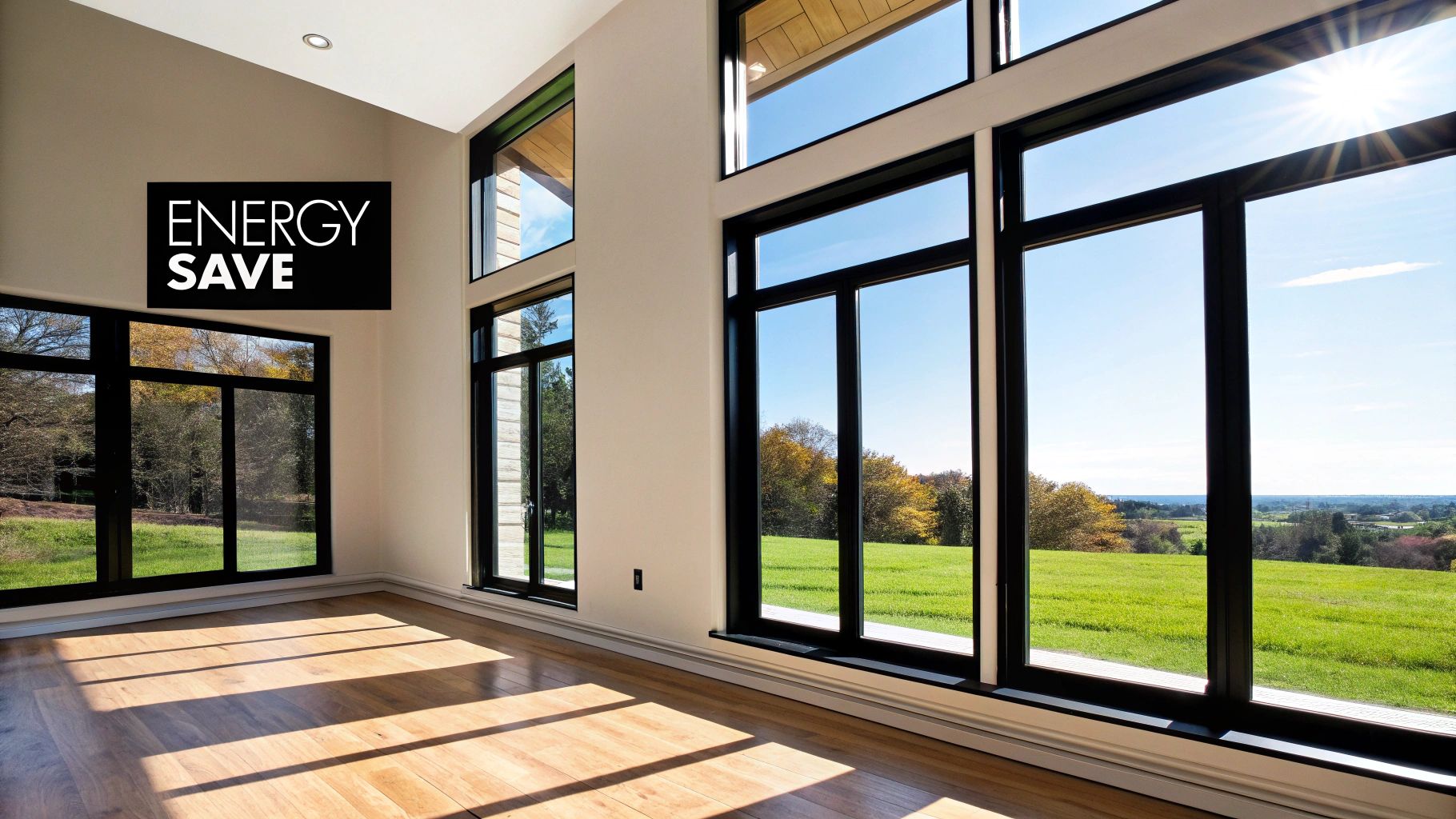
So, you’re thinking about energy-efficient windows. But what kind of savings are we really talking about? While the initial cost can seem daunting, the long-term financial benefits can be significant. This means looking beyond the sticker price and considering the potential return on investment (ROI) over the lifetime of your windows.
Understanding Your Potential ROI
Calculating your ROI depends on a few key factors. These include your local energy costs, the efficiency rating of the new windows, and the condition of your current windows. For instance, if you live somewhere with high energy costs and you’re replacing old, single-pane windows, your potential savings will be far greater than someone in a milder climate replacing newer double-pane windows.
The U.S. Department of Energy notes that replacing old single-pane windows with energy-efficient models can result in energy savings between 7% and 15% annually. This translates to potential savings of $71 to $501 per year, depending on your climate and the type of window being replaced. You can find more detailed statistics here. Over several years, these savings can add up and significantly offset the initial cost. You might also be interested in: Gladiator Windows and Doors Sitemap.
Beyond Energy Bills: The Hidden Savings
Beyond the direct savings on your energy bills, energy-efficient windows offer other financial perks. They reduce the strain on your HVAC system, which can potentially extend its lifespan and reduce maintenance costs. Plus, they eliminate uncomfortable drafts, making your home more comfortable overall.
The Impact on Property Value
Finally, energy-efficient windows can boost your property value. As energy costs continue to climb, homebuyers are increasingly focused on energy efficiency. This makes energy-efficient upgrades a strong selling point, potentially giving you a return on your investment when you sell your home. By considering all these factors – lower energy bills, reduced HVAC maintenance, increased comfort, and higher property value – you can gain a clearer understanding of the true value of investing in energy-efficient windows.
Premium Features Worth Every Extra Dollar

Upgrading to energy-efficient windows is a big investment. Understanding which premium features truly make a difference is key to maximizing your return. Not all upgrades are equal, so let's explore the core technologies and their advantages. This will help you make smart choices when budgeting for energy-efficient windows.
Low-E Glass Coatings: Reflecting Savings
Low-Emissivity (Low-E) coatings are thin, nearly invisible layers on window glass. These coatings reflect infrared radiation, minimizing heat transfer. This means your home stays warmer in the winter and cooler in the summer, resulting in lower energy bills year-round. The best Low-E coating depends on your climate and is a major factor in the overall cost.
Gas Fills: An Invisible Efficiency Boost
Argon and krypton are inert gases used between window panes. These gases are denser than air, further reducing heat transfer. Argon is the more common and budget-friendly option. Krypton provides even better insulation but comes with a higher price tag. A gas fill is a cost-effective way to boost window performance. You might be interested in: Gladiator Window and Door Collections.
Insulated Frames: Strengthening the Barrier
The window frame plays a vital role in energy efficiency. Insulated frames, often made of fiberglass or composite materials, reduce heat transfer. This creates a stronger thermal barrier, minimizing energy loss. While they add to the initial cost, insulated frames pay off over time with lower energy bills.
Warm-Edge Spacers: Breaking the Thermal Bridge
Warm-edge spacers separate the glass panes, creating the insulating air space. Traditional metal spacers conduct heat, creating a thermal bridge. Warm-edge spacers, made of non-metallic materials, reduce this conduction, improving insulation and minimizing energy loss. This small detail makes a big difference in overall window efficiency.
Choosing the Right Combination for Your Climate
Energy-efficient windows not only lower energy costs but also contribute to a greener planet. Low-E windows, for instance, reduce heat transfer by reflecting heat, minimizing energy loss. They typically cost 10% to 15% more than standard windows but offer significant long-term savings. Find more detailed statistics here. The ideal combination of features depends on your climate. In colder climates, maximizing insulation with Low-E coatings, gas fills, and insulated frames is essential. In hotter climates, controlling solar heat gain with specialized Low-E coatings is a priority.
Value Analysis of Premium Features
To help you compare the value of each feature, we've compiled the following table. It details the added cost, energy savings potential, typical payback period, and ideal climate conditions for each upgrade.
| Feature | Added Cost | Energy Savings Potential | Payback Period | Best For |
|---|---|---|---|---|
| Low-E Coating | Low | Medium-High | Short-Medium | All Climates |
| Argon Gas Fill | Low | Medium | Short | All Climates |
| Krypton Gas Fill | Medium | High | Medium | Extreme Climates |
| Insulated Frames | Medium-High | High | Medium-Long | All Climates |
| Warm-Edge Spacers | Low | Medium | Short | All Climates |
By understanding these features, you can make informed decisions about which upgrades are worth the investment for your home and climate. This ensures your budget aligns with your desired performance and savings.
Installation Costs: The Make-or-Break Investment
Even the highest quality energy-efficient windows won't live up to their potential if the installation is subpar. Proper installation is crucial, impacting both the initial cost and the long-term energy performance of your windows. Several factors, including your home's age, wall construction, and the current condition of the existing frames, can significantly affect the complexity and overall cost.
Evaluating Your Home's Specific Needs
Older homes often present unique installation challenges. For instance, homes with deteriorated frames may require substantial repair or even complete replacement before new windows can be installed, adding to the project's overall cost and timeline. Homes with non-standard window sizes or distinct architectural details often necessitate custom work, which also influences the final installation expenses.
Window accessibility is another important consideration. Windows located on upper floors or in hard-to-reach areas might require specialized equipment, like scaffolding, which can increase labor costs. It's essential to factor this into your budget when you're gathering installation quotes.
The Dangers of Bargain Installations
While a bargain installation price might be tempting, it can often lead to significant problems down the road. Improperly installed windows compromise energy efficiency, resulting in higher energy bills and decreased comfort. Issues like air leaks, poor sealing, and insufficient insulation can negate the advantages of investing in energy-efficient windows in the first place.
Furthermore, a faulty installation could void your warranty, leaving you responsible for expensive repairs in the future. Investing in a quality installation upfront can save you significant money and headaches in the long run.
The Value of Certified Professionals
Certified installers have the necessary expertise and training to ensure proper installation, optimizing window performance and longevity. Their understanding of building codes and best practices for energy efficiency is essential for maximizing your investment. A certified professional will provide a properly sealed and insulated window that delivers the energy savings you expect.
Evaluating Contractor Proposals and Workmanship
When reviewing contractor proposals, it's important to look beyond the price tag. A comprehensive quote should include detailed information about materials, labor, permits, and warranty specifics. Transparency is crucial for avoiding unexpected costs and ensuring a smooth installation process. You might also find helpful resources like the Gladiator Windows and Doors Blog Sitemap.
Indicators of high-quality workmanship include attention to detail, proper sealing and insulation, and a clean, professional finish. Don't hesitate to ask contractors for references and examples of their previous projects. This allows you to evaluate their skill level and gauge customer satisfaction.
Avoiding Common Installation Pitfalls
Common installation pitfalls include improper flashing, insufficient insulation, and inadequate sealing around the window frame. These issues can result in air leaks, moisture damage, and reduced energy efficiency. Carefully inspect the completed installation to confirm that these critical areas have been addressed correctly.
By understanding the factors that influence installation costs and recognizing the importance of professional installation, you can make a well-informed decision that safeguards your investment and maximizes the benefits of your energy-efficient windows. This proactive approach helps ensure you receive the expected return on investment and enjoy a comfortable, energy-efficient home for years to come.
Maximizing Tax Credits and Hidden Incentives
Investing in energy-efficient windows is a smart financial move. Not only will you save on energy costs over time, but you can also reduce your upfront expenses. Smart homeowners know how to make the most of available incentive programs to maximize their return on investment. Let's explore the tax credits, rebates, and other incentives that can make your energy-efficient window project more affordable.
Federal Tax Credits: A Significant Savings Opportunity
The federal government offers valuable tax credits for energy-efficient home improvements, including new windows. Currently, you can claim a credit for 30% of the cost of qualifying energy-efficient windows, up to a maximum of $1,200 annually. This includes installation costs, so a significant portion of your investment can be recouped. Be sure to consult the Energy Star website for the most current requirements and a list of eligible products.
This tax credit provides a strong motivation for switching to energy-efficient windows. While the initial cost may be higher, these windows often pay for themselves over the years through lower energy bills. They can also increase your home's value. Learn more about the potential energy savings here.
State and Local Rebates: Exploring Regional Opportunities
In addition to federal tax credits, many state and local utilities offer rebate programs for energy-efficient upgrades like window replacements. These rebates can differ significantly depending on your location and the specific windows you choose. Researching programs in your area is key to identifying potential savings.
Some programs offer substantial rebates that can further reduce your out-of-pocket expenses. Combining these rebates with the federal tax credit can significantly lower the total cost of your new windows.
Utility Company Incentives: Lowering Your Energy Bills
Many utility companies also offer incentives for energy-efficient upgrades, such as rebates, discounts, or special financing options for window replacements. Contact your local utility company to learn about available programs. These incentives can stack up with federal and state programs to provide even more savings.
Manufacturer Promotions: Taking Advantage of Special Offers
Window manufacturers often have promotions and discounts. Keeping an eye out for these deals can lead to significant savings. Some manufacturers offer rebates, while others give discounts through participating dealers. These promotions can make higher-end window options more budget-friendly. For more information on choosing energy-efficient windows, check out this resource: How to Choose Energy-Efficient Windows.
Whole-Home Certification Programs: Unlocking Additional Benefits
Installing energy-efficient windows can help you achieve whole-home certifications, like Energy Star or LEED. These certifications not only indicate your home's energy efficiency but can also unlock financial benefits like property tax deductions or better loan terms. Explore these programs to see how new windows can contribute to your overall home efficiency goals.
Securing Your Savings: Documentation and Timing
Proper documentation is essential to secure these incentives. Keep records of your purchase, installation, and any necessary certifications. Be mindful of deadlines for applying for rebates and tax credits. Careful planning and timely action will help you maximize your savings. By taking advantage of these incentives, you can significantly lower the cost of your energy-efficient windows and enjoy long-term savings.
Making Your Final Decision: A Strategic Approach
After researching energy-efficient window costs, it's time to make a decision. This section offers a strategic way to evaluate options and confidently choose the best windows for your needs, budget, and climate. Balancing upfront costs with long-term savings is key.
Balancing Budget and Long-Term Savings
Comparing the initial cost of energy-efficient windows with potential long-term energy savings is crucial. Energy-efficient windows often cost more upfront, but reduced energy consumption over time can lead to significant savings, offsetting the initial investment. It's similar to buying a fuel-efficient car: the higher purchase price is balanced by lower fuel costs over the car's lifetime.
For instance, if you live in a cold climate, windows with high insulation values can drastically cut heating costs, offering a quicker return on investment. In milder climates, the payback period may be longer. Understanding your climate and its impact on energy use is crucial for a sound financial decision.
Navigating the Buying Roadmap
Buying energy-efficient windows can feel overwhelming. Here's a simplified guide:
- Initial Research: Learn about window types, materials, and features.
- Assessment: Evaluate your home's needs, including climate, window size, and existing frames.
- Get Quotes: Obtain several quotes from reputable contractors with transparent, detailed specifications.
- Compare Quotes: Compare quotes beyond price, considering warranty, installation, and contractor experience.
- Negotiate and Secure the Best Terms: Negotiate contract terms and explore financing.
- Plan Installation: Schedule installation and prepare your home with your chosen contractor.
This roadmap helps you make informed decisions at each step, ensuring a smooth window replacement project.
Insider Tips for Negotiating and Securing the Best Terms
Effective negotiation can save you money. Here are some tips:
- Get multiple quotes: This gives you leverage to compare offers.
- Be flexible with your timeline: Contractors may offer discounts during slower periods.
- Inquire about package deals: Combining window replacements with other improvements can save money.
- Discuss payment options: Explore financing or discounts for upfront payment.
Maintenance Strategies for Long-Term Performance
Maintaining your windows protects your investment. Regular cleaning, inspection, and lubrication of moving parts extend their lifespan and energy efficiency. Simple tasks like cleaning tracks and checking for air leaks prevent bigger issues later.
Determining Genuine Value
The "best" energy-efficient window provides the most value for your situation. Consider your home's style, climate, and budget. For some, mid-range vinyl windows with double-pane glass might be best. For others, premium fiberglass windows with triple-pane glass and advanced coatings could be the smarter long-term investment.
By carefully weighing costs and benefits, and using a strategic approach, you can choose energy-efficient windows that offer the best return on investment, improving your home's comfort and energy efficiency for years to come.
Ready for high-quality, energy-efficient windows and doors? Explore custom-made products at Gladiator Window and Doors and experience the difference quality and affordability make.

















